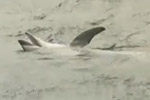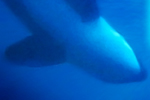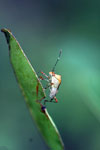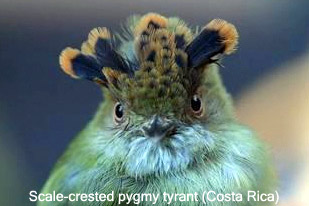DNA tests reveal new dolphin species (photos)
Jeremy Hancemongabay.com
October 30, 2013
According to the study published in Molecular Ecology—which looked at the dolphins' physical features (including over 180 skulls) as well as their mitochondrial and nuclear DNA—the world's humpback dolphins should be split into four total species: the Atlantic humpback dolphin (Sousa teuszii) found off the coast of West Africa; Sousa plumbea found in the western and central Indian Ocean; Sousa chinensis found in the eastern Indian and western Pacific Oceans; and the new species off the coast of Australia.
"New information about distinct species across the entire range of humpback dolphins will increase the number of recognized species, and provides the needed scientific evidence for management decisions aimed at protecting their unique genetic diversity and associated important habitats," says Howard Rosenbaum, co-author and Director of Wildlife Conservation Society's Ocean Giants Program.
Living close to shorelines has made humpback dolphins severely vulnerable to human impacts. Currently, the Atlantic humpbacked dolphin is listed as Vulnerable by the IUCN Red List, while the Indo-Pacific populations (considered as one unit) are listed as Near Threatened. The recognition of three separate species, instead of one, could change this. The marine mammals are imperiled by fishery bycatch, pollution, and ship strikes in many parts of the world. They may also still be hunted for food in parts of West Africa.
For the new species, the biggest threat is likely the Australian fishing industry.
"[Humpback dolphins] are often caught in fishing nets, such as gillnets and trawls, and in anti-shark nets set to protect bathing beaches from large sharks along the coasts of Queensland and New South Wales, Australia," according to the IUCN Red List. "Accurate catch data for humpback dolphins in the Australian nets are unavailable, but kills in anti-shark nets off Queensland are high relative to estimated abundance."
Dubbing the Australia population a distinct species may increase efforts to safeguard it from extinction. But first, scientists need to give it a name.
.600.jpg)
A new as-of-yet unnamed species of humpback dolphin off the coast of northern Australia. Photo credit: Guido Parra.

Two individuals of the newly identified humpback dolphin species. Photo credit: Guido Parra.
Citations:
- Martin Mendez, Thomas J. Jefferson, Sergios-Orestis Kolokotronis, Michael Krützen, Guido J. Parra, Tim Collins, Giana Minton, Robert Baldwin, Per Berggren, Anna Särnblad, Omar A. Amir, Vic M. Peddemors, Leszek Karczmarski, Almeida Guissamulo, Brian Smith, Dipani Sutaria, George Amato, Howard C. Rosenbaum. (2013) Integrating multiple lines of evidence to better understand the evolutionary divergence of humpback dolphins along their entire distribution range: a new dolphin species in Australian waters? Molecular Ecology. 1365-294X. http://dx.doi.org/10.1111/mec.12535
 AUTHOR: Jeremy Hance joined Mongabay full-time in 2009. He currently serves as senior writer and editor. He has also authored a book.
AUTHOR: Jeremy Hance joined Mongabay full-time in 2009. He currently serves as senior writer and editor. He has also authored a book.
|
Related articles
Fishermen illegally killing dolphins for shark-bait in Peru (video)
 (10/23/2013) Peruvian fishermen slaughtered dolphins to use as bait for shark fishing, an undercover investigation has revealed. Footage showed infant and adult dolphins being harpooned then stabbed and clubbed before, in some cases, being cut open and butchered while still alive. The slaughtered dolphins were cut up and used as bait. Dolphins are also killed for human consumption in Peru even though it is illegal.
(10/23/2013) Peruvian fishermen slaughtered dolphins to use as bait for shark fishing, an undercover investigation has revealed. Footage showed infant and adult dolphins being harpooned then stabbed and clubbed before, in some cases, being cut open and butchered while still alive. The slaughtered dolphins were cut up and used as bait. Dolphins are also killed for human consumption in Peru even though it is illegal.
Photo: Pod of 100,000 dolphins spotted off California coast
(02/21/2013) A 'super mega-pod' of some 100,000 dolphins was spotted off the coast of San Diego last week, according to a report from NBC San Diego.
Save Lolita: new film urges release of captive killer whale
 (01/22/2013) Through his new 90-second PSA, Save Lolita, filmmaker Daniel Azarian wanted to connect people to the plight of Lolita on a deeply human level; the only problem: Lolita is an orca, also known as a killer whale. But the stark, moving PSA succeeds, given the sociability of an individual—human or orca—who was stolen from her family and held in captivity for the past 42 years at Miami's Seaquarium.
(01/22/2013) Through his new 90-second PSA, Save Lolita, filmmaker Daniel Azarian wanted to connect people to the plight of Lolita on a deeply human level; the only problem: Lolita is an orca, also known as a killer whale. But the stark, moving PSA succeeds, given the sociability of an individual—human or orca—who was stolen from her family and held in captivity for the past 42 years at Miami's Seaquarium.












